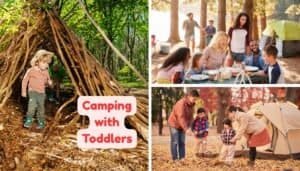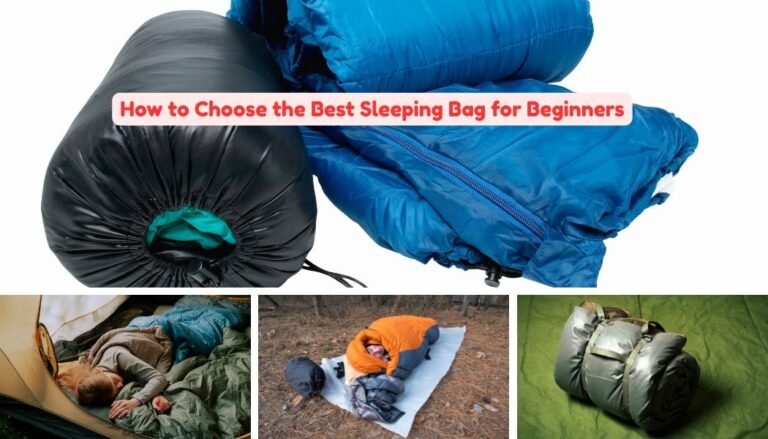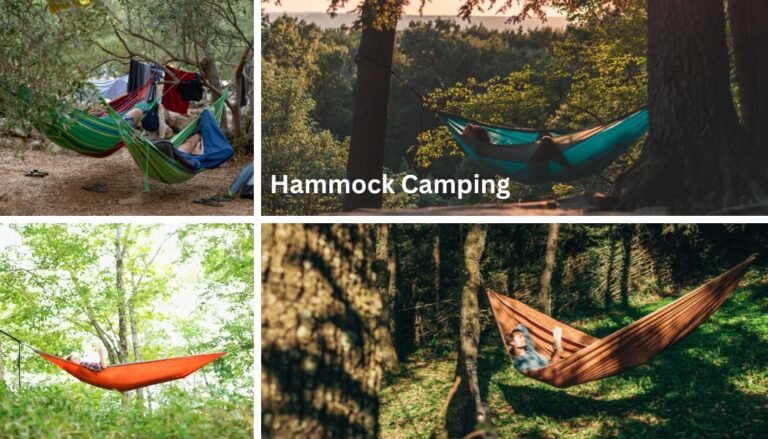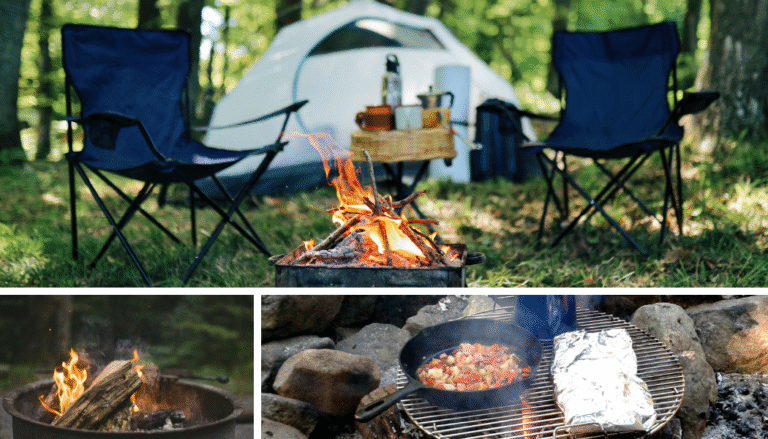Why Camping with Toddlers is a Family Adventure Worth Trying
Camping with toddlers might seem like a daunting task, but trust me, it can be one of the most rewarding experiences! Imagine the joy on your little one’s face as they spot their first squirrel or toast their first marshmallow by the campfire. With proper planning and some clever hacks, you can transform potential chaos into cherished memories. Did you know that kids who spend time outdoors are 55% more likely to develop a lifelong love for nature? Let me guide you through this journey with practical tips and advice to make your family camping trip unforgettable.
Planning Your Camping Trip with Toddlers
Choosing Toddler-Friendly Camping Destinations
Picking the right spot can make or break your camping trip with toddlers. Trust me, I learned this the hard way when I decided our local state park, with its rocky trails and zero shade, would be perfect. Spoiler alert: it wasn’t. My little one was miserable, and I spent most of the trip carrying them around like a human hiking pack. Now, I know better.
Look for campsites with flat, open spaces where toddlers can safely explore without constant hovering. Bonus points if there’s a playground or a shallow stream nearby – those are like magnets for tiny adventurers. Some campgrounds even offer kid-specific activities, like nature scavenger hunts or storytelling events around the campfire. Oh, and always check reviews online (family forums are gold) to make sure the site truly lives up to its toddler-friendly reputation.
Checking Weather Conditions and Seasonal Considerations
Weather can make even the best-laid plans go sideways. One summer, I forgot to check the nighttime lows, thinking, “Eh, it’s summer, it’ll be fine.” It wasn’t. We ended up with a shivering toddler who couldn’t sleep, and I spent the night inventing blanket forts out of sheer desperation. Lesson learned: always check the forecast.
Seasonally speaking, spring and fall tend to be the sweet spots. Summer can get uncomfortably hot, and winter? Well, unless you’re a pro at winter camping (and your toddler is, too), skip it. Always pack layers even if the weather app promises sunshine because conditions can change on a dime. A good rain cover for your tent? That’s non-negotiable.
Duration: How Long Is Too Long for Little Ones?
The first time we camped with our toddler, I ambitiously booked a four-night trip. By night two, I was googling “earliest checkout policies” while rocking a screaming toddler at 2 a.m. It turns out that less is more when you’re camping with little ones.
Start with one or two nights to test the waters. Toddlers thrive on routine, so the disruption of being away from home can be a lot for them (and for you). If things go well, you can gradually work up to longer trips. Keep in mind that even the best camping trip can feel like a marathon if your toddler isn’t into it. Be ready to adjust and maybe even call it quits early if necessary – there’s no shame in heading home if everyone’s at their wit’s end.
Planning for toddlers is like assembling a puzzle – when all the pieces fit, it’s magical. And when they don’t? Well, you’ll have stories to tell and you’ll know better next time!

Packing Essentials for Toddlers
Clothes: Layering Options and Waterproof Essentials
Packing clothes for toddlers is like preparing for an unpredictable weather rollercoaster. Toddlers get cold, hot, wet, and messy, all in the span of an hour. On our first trip, I thought a single jacket and a few extra shirts would suffice. Nope. By midday, my kid had gone through their entire wardrobe, thanks to a muddy puddle and a ketchup mishap.
Now, I swear by layering. Think lightweight base layers, cozy fleece pullovers, and a reliable waterproof jacket. Quick-dry pants are a lifesaver, especially if they decide to splash through a creek. Don’t forget waterproof boots and extra socks – wet feet are the quickest way to a meltdown. And pack more clothes than you think you’ll need. Trust me, toddlers attract mess like a magnet.
Snacks: Healthy and Easy-to-Pack Options
Snacks can be the difference between a peaceful hike and a trail tantrum. I learned this the hard way on a long walk when my snack stash ran out, and my hangry toddler was suddenly a very vocal critic of my planning skills.
Pack a mix of healthy, easy-to-carry options; think string cheese, whole-grain crackers, dried fruit, and veggie pouches. Avoid anything super sticky or crumbly – it’ll save you a cleanup headache later. And don’t underestimate the power of novelty. A snack they don’t usually get at home (hello, fruit leather or yogurt-covered raisins) can feel like a treat and keep them happily munching.
First-aid Kits and Toddler-Specific Medications
If there’s one thing toddlers excel at, it’s finding creative ways to get minor injuries. I once forgot to pack Band-Aids and ended up fashioning one out of a napkin and duct tape. Not my finest moment.
A good first-aid kit should include Band-Aids (in fun designs, if possible), antiseptic wipes, tweezers for splinters, and a digital thermometer. Add in toddler-safe medications, like liquid pain relievers and antihistamines, just in case. Don’t forget sunscreen and bug spray that’s safe for sensitive skin. It’s better to have it and not need it than to find yourself improvising in the wilderness.
Sleep Gear: Portable Beds, Sleeping Bags, and Comfort Items
Sleep is sacred when camping with toddlers. One sleepless night can throw off the whole trip. Early on, I made the mistake of assuming my toddler would sleep just fine in an adult sleeping bag. Spoiler: they hated it, and none of us slept that night.
Now, I pack a toddler-sized sleeping bag or a portable travel bed. Add their favorite blanket and stuffed animal to create a sense of home. A white noise machine or a soft nightlight can also work wonders for calming nighttime nerves. And if you’re tent camping, a foam mat or inflatable pad under their sleeping gear can make the ground feel a little less, well, ground-y.
Packing for toddlers might feel like overkill at first, but when you’re prepared for every possible scenario, you’ll thank yourself later. And hey, you might even get to enjoy a s’more or two without interruptions. Maybe.
Keeping Toddlers Safe at the Campsite
Setting Boundaries: Creating a Safe Zone
The moment we set up camp, my toddler took off like a mini explorer on a mission. That’s when I realized I needed a game plan to keep them safe. Now, the first thing I do is create a “safe zone.” This is essentially a designated area where they can roam freely without venturing too far.
I use bright flags or colorful ropes to mark off the boundaries—toddlers respond well to visual cues. I also explain the rules in simple terms, like, “Stay where you can see Mommy or Daddy.” A portable play yard or large picnic blanket can also act as a contained space for younger toddlers. Bonus: it keeps their toys and snacks from scattering across the campsite.
Fire Safety Rules for Curious Little Ones
Campfires are magical for adults and toddlers alike, but they’re also a serious hazard for little ones. My heart still races when I remember the time my toddler tripped near the fire pit. Thankfully, they weren’t hurt, but it was a wake-up call.
Now, I set strict fire rules. We establish a “no-go zone” around the fire, often marked by sticks or stones. I teach them to treat the fire like a “hot monster” they shouldn’t approach. When cooking over the fire, I keep all tools and hot items well out of reach. And I always supervise them closely during fire time – no exceptions.
Spotting and Avoiding Potential Campsite Hazards
You’d be surprised how many hazards are lurking at even the most family-friendly campsite. From low-hanging branches to hidden ant hills, toddlers seem to find danger with uncanny precision. On one trip, I turned my back for a second, and my kid was gleefully inspecting a patch of poison ivy. Lesson learned: do a hazard sweep as soon as you arrive.
I start by scanning the area for sharp rocks, broken glass, or anything that could trip up little feet. If there’s a body of water nearby, I set clear rules about when and how they can approach it – always with an adult. And while toddlers love to pick up “treasures,” like sticks and pinecones, I keep a close eye to make sure they’re not grabbing anything unsafe (or trying to taste it).
Keeping toddlers safe at a campsite isn’t just about rules – it’s about constant vigilance and setting up an environment where they can explore safely. It takes effort, sure, but the peace of mind is absolutely worth it. Plus, it lets you relax (just a little) and enjoy the adventure, too.
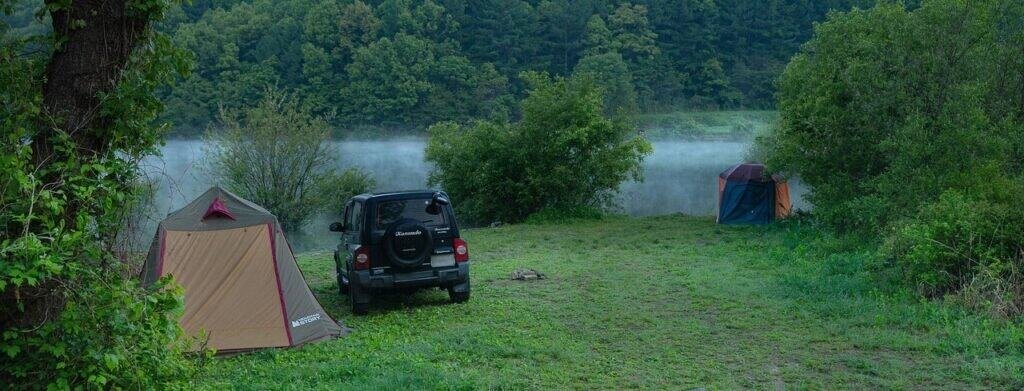
Activities to Keep Toddlers Engaged
Nature-Based Games: Scavenger Hunts and Simple Hikes
If there’s one thing I’ve learned about camping with toddlers, it’s that boredom is your worst enemy. That’s why I always plan a few nature-based games to keep them entertained. A scavenger hunt is a surefire hit – kids love the thrill of searching for treasures. I keep it simple by creating a list of things they can easily find, like a smooth rock, a yellow flower, or a crunchy leaf. You’d be amazed at how something so basic can turn into hours of fun.
For hikes, stick to trails that are short and flat. I made the mistake once of taking my toddler on a longer, slightly uphill trail, and let’s just say I ended up carrying a very cranky little explorer most of the way back. Now, I choose paths with lots of things to see – like birds, streams, or interesting trees – to keep them engaged along the way.
Creative Play: Building with Sticks, Rocks, and Leaves
Nature is the ultimate toy chest, and toddlers have an incredible knack for turning the simplest things into magical creations. On one trip, my kid decided a pile of sticks was a castle, and that castle kept them busy for nearly an hour. Now, I encourage this kind of open-ended play by asking questions like, “Can we build a bridge with these rocks?” or “What kind of house would a squirrel live in?”
Sometimes, I’ll join in, and together, we’ll make “rock art” by stacking stones or arranging leaves in fun patterns. It’s messy, but the joy on their face is worth the dirt under my nails. And the best part? There’s nothing to pack or clean up—nature provides, and nature reclaims.
Quiet Time Activities: Coloring Books and Storytime Under the Stars
Toddlers might have endless energy, but even they need some downtime. Quiet time activities like coloring books, stickers, or a favorite storybook can be lifesavers after a busy day of exploring. I always bring a small stash of crayons and coloring books with outdoor themes – bonus points if it ties into what we’ve seen that day, like animals or trees.
When the sun sets, there’s something magical about curling up under the stars for storytime. I pack a flashlight or lantern and pick a book with an adventurous theme to match the camping vibe. Sometimes, I make up stories about the stars or animals we’ve spotted. These moments are usually when my toddler calms down and soaks up the experience, and honestly, it’s my favorite part of the trip.
Keeping toddlers engaged at the campsite isn’t as daunting as it seems. With a mix of adventure, creativity, and calm activities, you can turn the great outdoors into their playground and create memories you’ll both cherish. Just be ready to get a little dirty and maybe lose a crayon or two along the way.
Meal Prep and Food Tips for Camping with Toddlers
Easy-to-Cook Meals Toddlers Will Love
Meal prep for toddlers at a campsite can feel daunting, but trust me, it’s all about simplicity. One of my go-to meals is foil-packet dinners. For toddlers, I prep smaller packets with diced chicken, sweet potatoes, and a dash of olive oil. It’s easy to toss over the fire, and the best part? Minimal cleanup. Breakfast is another chance to shine – mini pancake mix (just add water!) cooked on a portable griddle is always a hit. Add some sliced bananas or berries, and they’ll think it’s a five-star meal.
For snacks, you can’t go wrong with classic peanut butter sandwiches or cheese cubes paired with fruit. On one trip, I made the mistake of trying something too fancy (quinoa salad…what was I thinking?), and my toddler wasn’t having it. Lesson learned: stick to what they already love but make it camping-friendly.
Keeping Meals Nutritious and Exciting
Let’s face it, camping isn’t an excuse to let nutrition fly out the window. I try to sneak in veggies wherever I can. For example, carrot sticks and hummus are a great snack, and I’ve even blended spinach into pancake batter for a fun green twist (my toddler called them “monster pancakes” and ate every bite).
Another trick is to make meals interactive. For lunch, I sometimes let my toddler “build” their own wrap with tortillas, shredded chicken, and sliced veggies. It’s like playing with food, but it actually gets eaten. And if you’re grilling, veggie kabobs with bright colors are a win – they’re fun to eat and look like a treat even though they’re healthy.
Managing Food Storage and Minimizing Waste
Keeping food fresh while camping is a skill I’m still perfecting, but here’s what’s worked for me so far. I pack everything in stackable, airtight containers and use a high-quality cooler. For items like yogurt or milk, I freeze individual portions ahead of time; they double as ice packs and stay fresh longer.
To cut down on waste, I plan meals with overlapping ingredients. For instance, I’ll use the same chicken for wraps and foil packets or the same veggies for kabobs and snacks. Leftovers are repurposed into quick meals – if there’s extra pancake batter, it turns into snack-time waffles cooked on a camping stove.
For trash, I bring small compostable bags for food scraps and teach my toddler about the “leave no trace” principle. It’s actually turned into a fun game of “spot the trash” as we clean up together. Plus, it’s a small way to teach them about respecting nature.
With a little prep and a lot of flexibility, mealtime can become one of the best parts of camping with toddlers. The key? Keep it simple, pack smart, and don’t stress too much if their favorite snack ends up in the dirt (because it will).
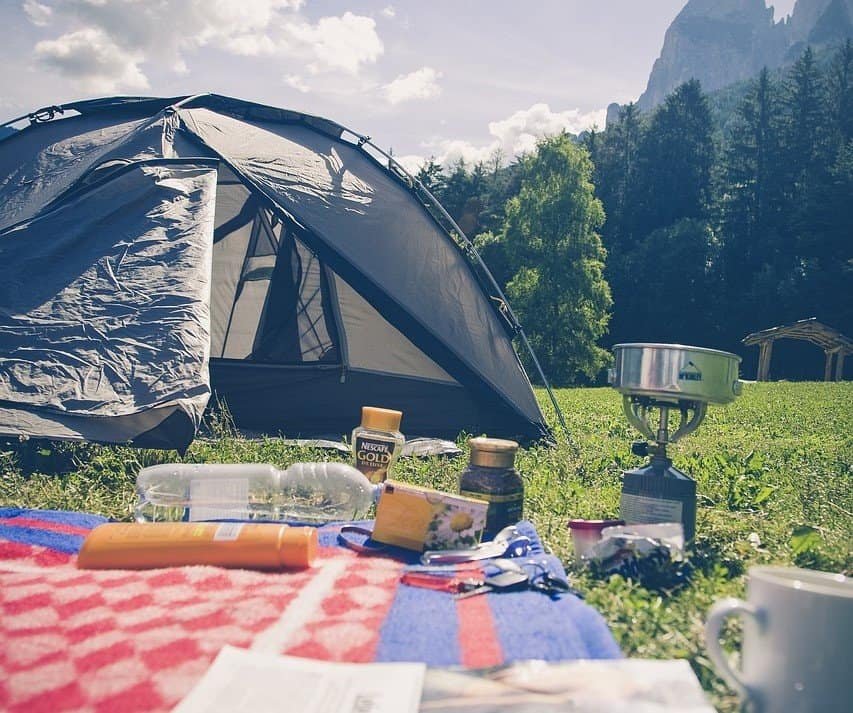
Managing Toddler Meltdowns Outdoors
Recognizing and Handling Overstimulation
Camping can be sensory overload for toddlers – new sounds, strange sights, and unpredictable weather can throw them off balance. I remember one trip where my toddler completely lost it because of a flock of loud birds near our site. At first, I didn’t get it, but then I realized the noise was just too much for their little brain to handle. Now, I keep an eye out for signs of overstimulation, sudden mood swings, clinginess, or zoning out.
When this happens, I’ve found it helps to create a quiet break space, even if it’s just a shady corner with a blanket. A quick cuddle, some deep breaths, and maybe a snack can work wonders. Distraction helps, too – something as simple as counting leaves or pointing out a butterfly can redirect their focus and calm them down.
Comfort Items: Why You Should Always Pack Their Favorite Blanket
Never underestimate the power of a favorite blanket or stuffed animal. I learned this the hard way when I forgot my toddler’s beloved bunny on a trip. Let’s just say no amount of campfire songs could replace it. Now, that bunny is the first thing on my packing list.
Comfort items act as a touchstone for toddlers when everything else feels unfamiliar. Whether it’s their blanket, a well-loved book, or even a specific sippy cup, having that one familiar thing can make all the difference during a meltdown.
Pro tip: Pack a backup comfort item if you can. Nature has a way of misplacing things, and it’s better to be prepared than face a bunny-less bedtime.
Tips for Keeping Routines While in the Wild
Toddlers thrive on routine, even when you’re miles from home. While camping, I try to stick to the same general schedule as we have at home – mealtimes, naps, and bedtime all happen around the same time. It’s not always perfect, but the consistency helps them feel secure.
Bedtime, in particular, can be tricky. On one trip, I thought the novelty of sleeping in a tent would be enough, but nope – my toddler was up half the night because it felt too different. Now, I bring elements of their bedtime routine with us, like their bedtime story, a portable white noise machine, and a nightlight for the tent. This way, it feels more like home, and everyone gets a bit more sleep.
Managing meltdowns outdoors can be challenging, but it’s not impossible. With a little patience, some pre-planned strategies, and their favorite comfort items, you can help your toddler navigate the ups and downs of outdoor adventures. And when all else fails? A big hug and a snack are usually the ultimate reset button.
Cleaning and Hygiene While Camping
Toddler-Friendly Wipes and Portable Wash Solutions
Wipes are the MVP of camping with toddlers – seriously, I pack them like I’m preparing for a wipe apocalypse. They’re not just for diaper changes; they’re lifesavers for sticky hands, muddy faces, and even wiping down surfaces like picnic tables or portable high chairs. Look for hypoallergenic options with minimal scent to avoid skin irritation.
For washing up, I’ve found that portable camping sinks or collapsible wash basins are game-changers. A small amount of biodegradable soap and some warm water can turn a quick cleanup into a mini spa session for your toddler. Bonus: they usually love splashing around, so it doubles as entertainment. I also keep a travel-sized hand sanitizer clipped to my backpack for when soap and water aren’t an option.
Teaching Basic Hygiene in the Outdoors
Teaching hygiene while camping is a mix of patience and creativity. I start by making it fun. For example, we play a game where we “catch the germs” with soap bubbles before rinsing them off. It’s silly, but it works!
I also emphasize handwashing before meals and after exploring the campsite. Setting up a designated handwashing station with a small jug of water, soap, and a towel helps reinforce the habit. If you’re potty training, this is especially important – kids get curious about dirt and bugs, and clean hands are non-negotiable.
Of course, toddlers will be toddlers, and sometimes they’ll refuse to cooperate. On those days, I remind myself that a little dirt never hurt anyone – it’s part of the adventure.
Managing Diaper Changes and Potty Training Challenges
Changing diapers outdoors is all about preparation. I always bring a portable changing mat – it’s lightweight, folds up small, and keeps things sanitary. I also stash diapers, wipes, and a plastic bag for disposal in a separate, easy-to-reach pouch in my backpack. And don’t forget extra diapers – more than you think you’ll need. Trust me, you’d rather overpack than run out halfway through a muddy trail.
If you’re in the potty-training phase, camping can be a bit of a hurdle. I recommend bringing a portable potty; they’re compact and a lifesaver in remote areas where facilities are scarce. On one trip, we tried using public restrooms exclusively, and it was a disaster – cue a meltdown because the toilet was “too loud.” Lesson learned.
It’s also helpful to stick to a regular potty schedule. Gentle reminders and encouraging praise go a long way in keeping things on track. And accidents? They’ll happen. Just pack extra clothes, keep a sense of humor, and remember – it’s all part of the adventure.
Cleaning and hygiene with toddlers while camping isn’t always smooth sailing, but with the right tools and mindset, it’s manageable. Whether it’s a quick wipe-down or a full-on handwashing game, keeping your little one clean and happy in the wild is well worth the effort. And hey, a little dirt here and there just makes for better stories later!
Best Gear for Camping with Toddlers
Tents and Sleeping Solutions Tailored for Families
Choosing the right tent for camping with toddlers feels like picking the perfect house – it needs space, comfort, and a bit of toddler-proofing. Look for family tents with separate compartments or enough floor space to accommodate your kiddo’s inevitable sprawled-out sleeping position. Bonus points if the tent has high walls to discourage midnight escape attempts!
On one trip, I brought a tent that was just big enough for two adults and a toddler. Big mistake. My toddler turned into a human pinball, bumping into us all night. Now, I opt for tents labeled as “6-person” even if we’re just three – it gives us plenty of breathing room and space for gear.
For sleeping, portable toddler beds or inflatable sleeping pads are lifesavers. My go-to is a compact cot with a fitted sheet and their favorite blanket. If your toddler isn’t a fan of change (are they ever?), try a trial run at home first. Trust me, a practice night in the backyard can prevent a sleepless night in the woods.
Kid-Sized Camping Chairs and Utensils
Toddlers love having their own gear – it makes them feel grown-up and gives them a sense of independence. A kid-sized camping chair with cupholders? Game-changer. They’re perfect for meal times, sitting by the fire, or just hanging out while you prep food. Plus, they keep your little one off the ground, which means fewer bugs and less dirt.
When it comes to utensils, lightweight and colorful options are a win. Silicone plates, cups, and cutlery are not only toddler-friendly but also easy to clean and pack. I learned the hard way that regular adult utensils just don’t cut it when your kid wants to “do it by myself!” Now, I pack a whole set just for them—no more tantrums over fork sizes.
Carrier Backpacks for Hikes with Toddlers
If you plan on hiking, a sturdy carrier backpack is non-negotiable. These are designed for comfort – both yours and your toddler’s – and make it possible to explore trails without worrying about little legs giving out halfway through.
I vividly remember one hike where I didn’t have a carrier and ended up carrying my toddler piggyback for miles. Let’s just say my shoulders didn’t forgive me for days. Now, I use a carrier with padded straps, lumbar support, and even a sunshade for extra protection. Some models even have small storage compartments, so you can pack snacks and water without juggling multiple bags.
When choosing one, consider your toddler’s weight and the duration of your hikes. Adjustable carriers that grow with your child are worth the investment. And don’t forget to let them out for breaks – they’ll love walking on their own for short stretches and exploring at their own pace.
The right gear can make or break a camping trip with toddlers. With a spacious tent, kid-friendly seating, and a solid carrier backpack, you’ll set yourself up for success. Plus, seeing your little one beam with pride over their own “grown-up” gear is worth every penny.

Embrace the Outdoors: Make Camping with Toddlers a Family Adventure
Camping with toddlers doesn’t have to be stressful – it can be an exciting adventure that brings your family closer together. By planning ahead, packing smart, and embracing the unpredictable, you can create memories that your family will cherish forever. So why wait? Pack up your gear, gather your little explorers, and start your outdoor adventure today!
What is the best age to start camping with a toddler?
While it’s never too early to introduce your child to the outdoors, most parents find that ages 2-3 are ideal for camping with toddlers. At this stage, children are mobile, curious, and able to enjoy simple outdoor activities but still rely on naps and familiar routines. Always consider your child’s temperament and readiness for outdoor adventures.
Should I bring a portable toilet for my toddler while camping?
If your toddler is potty training, it’s a great idea to bring a portable toilet or potty seat, especially if the campsite doesn’t have easy access to restrooms. Even if your child is still in diapers, it’s important to have a designated spot for changing to keep things sanitary and organized.
How can I keep my toddler entertained while camping?
Keeping toddlers entertained during camping can be a challenge, but it’s also an opportunity for imaginative play! Try activities like scavenger hunts, simple nature walks, building stick forts, or playing with nature-based toys. Be sure to bring their favorite books or toys to provide a sense of comfort during quiet time.
How can I make meal prep easier for camping with a toddler?
Meal prep for toddlers can be simple with a bit of planning! Pre-prepare some meals at home, pack easy-to-serve foods like fruits, crackers, and finger foods, and focus on quick campfire meals like grilled cheese sandwiches or simple veggie skewers. Make sure to bring a portable high chair or seat for meal times.
What should I do if my toddler has a meltdown while camping?
Toddlers can get overstimulated by new environments, so it’s essential to stick to their routines as much as possible. Bring comfort items like their favorite blanket or stuffed animal. If a meltdown happens, find a quiet, familiar spot to soothe them. Also, taking breaks during the day can help avoid overstimulation and give your toddler time to recharge.
Disclaimer: This blog post contains affiliate links

